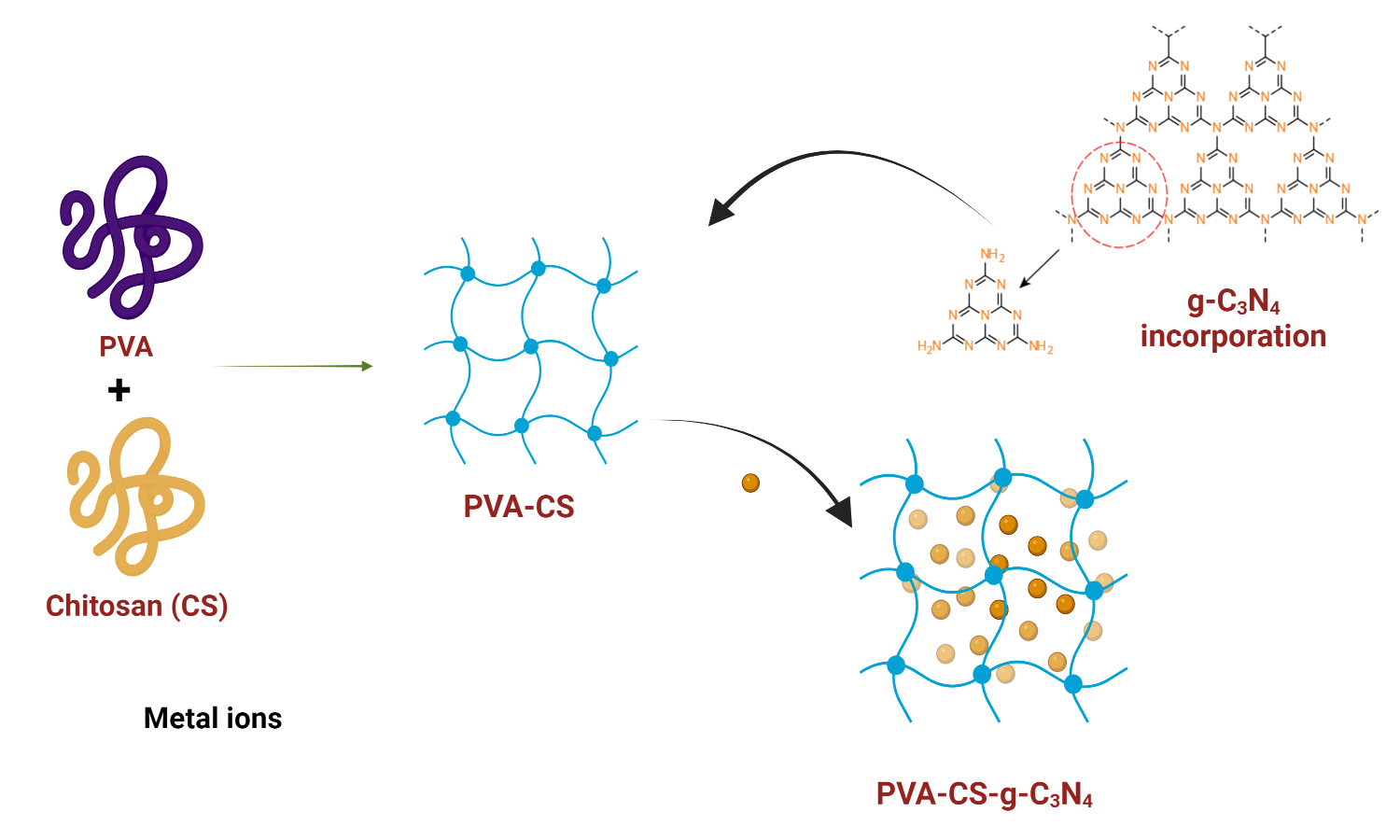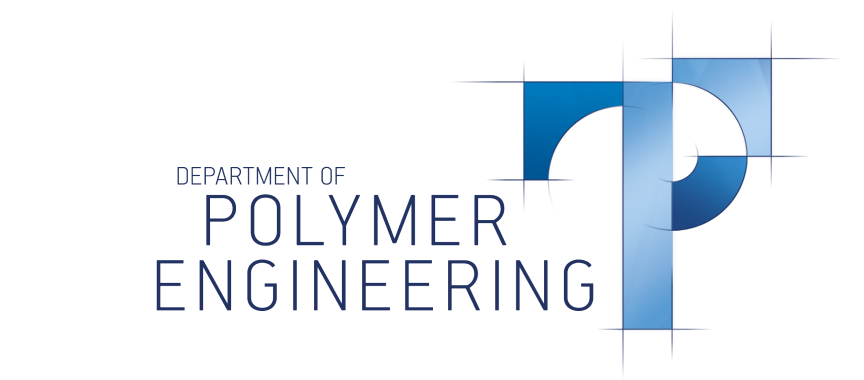Graphitic C3N4 incorporated chitosan-poly(vinyl alcohol) blend nanocomposites for the removal of Cu(II) and Cr(VI) ions from aqueous solutions
Shivapura Manchaiah Anush, Suchetha Naga Raju, Ballupet Honnapa Gayathri, Keresanthe Parameshwarappa Ajeya, Yarabahally Ravindranath Girish, Sanneerappa Darshan, Yelaware Puttaswamy Naveen, Kalappa Prashantha, Byrappa Krishnaiah Narendra, Aishwarya Jayaram
Vol. 18., No.1., Pages 102-115, 2024
DOI: 10.3144/expresspolymlett.2024.8
DOI: 10.3144/expresspolymlett.2024.8
GRAPHICAL ABSTRACT

ABSTRACT
A novel adsorbent material for the effective removal of hazardous metal ions from aqueous solutions was developed through modifications to chitosan. The process involved the use of vanillin to create cross-linked chitosan, which was then combined with thiourea-based graphitic carbon nitride (g-C3N4) to form a gel matrix. The resulting composite material was thoroughly characterized using various techniques, including Fourier transform infrared spectroscopy, thermogravimetric analysis, scanning electron microscopy, energy dispersive X-ray spectroscopy, and X-ray diffractometry. To assess its efficacy, adsorption experiments were conducted to determine the capability of the synthesized compounds to adsorb Cu(II) and Cr(VI) ions. The observed results found that the adsorption process was found to follow pseudo-second-order kinetics and the Langmuir isotherm model. Through thermodynamic studies, it was revealed that the adsorption process was both endothermic and spontaneous in nature. Furthermore, desorption studies confirmed that the material could be regenerated, making it reusable. This characteristic allowed for the effective recovery of the adsorbate species and highlighted the potential for reusing the adsorbent material multiple times.
RELATED ARTICLES
Mpho Phillip Motloung, Mokgaotsa Jonas Mochane
Vol. 19., No.11., Pages 1092-1132, 2025
DOI: 10.3144/expresspolymlett.2025.82
Vol. 19., No.11., Pages 1092-1132, 2025
DOI: 10.3144/expresspolymlett.2025.82

Polylactic acid (PLA) is one of the most widely used biopolymers, and it has demonstrated a huge potential for replacing some of the conventional plastics in certain application fields. However, due to a lack of other attributes such as antimicrobial properties and slow degradation rates, it is often blended with other polymers to impart these properties. Chitosan has desirable features including antimicrobial and antioxidant properties, biodegradability and biocompatibility, and environmental friendliness. Thus, it is widely blended with PLA to generate materials that can be applied in various fields. In recent years, PLA/chitosan blend composites and nanocomposites have been produced to develop sustainable and ecofriendly materials that can be suitable in active food packaging, water treatment, air filtration, and biomedical applications. This review provides an overview of the recent advancements in the development of PLA/chitosan blend composites and nanocomposites for various applications. The processing strategies, mechanical and thermal properties, together with utilization in biomedical, air filtration, water treatment, and packaging applications, are provided.



